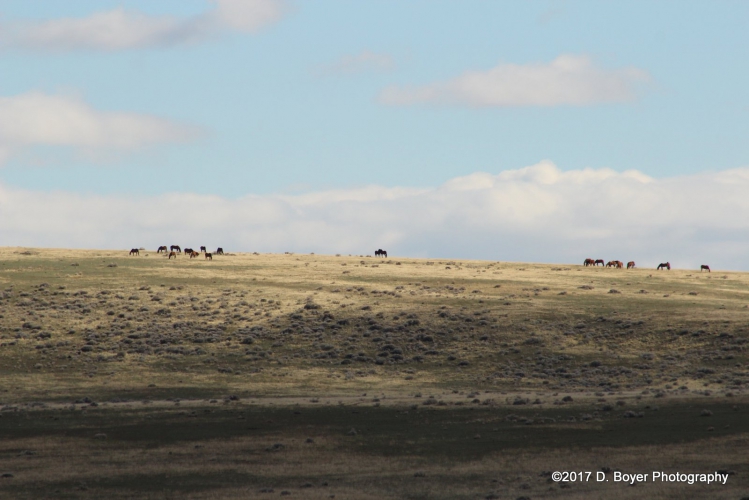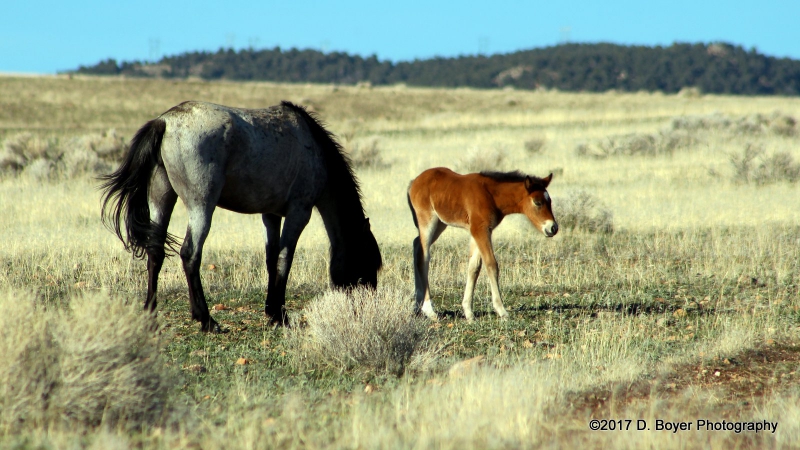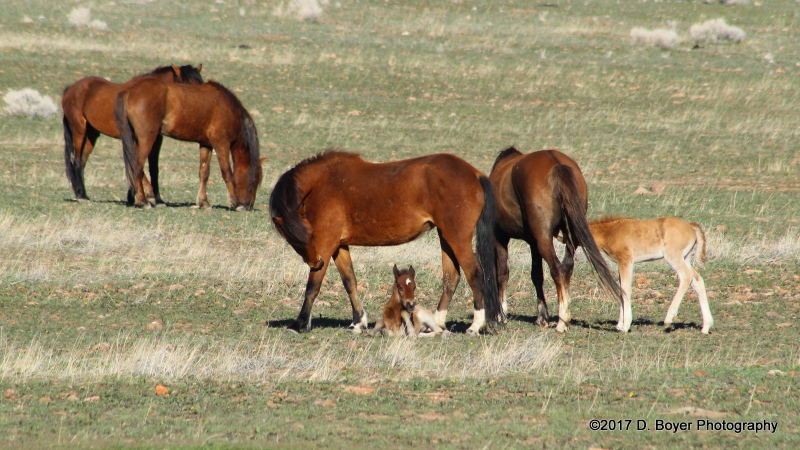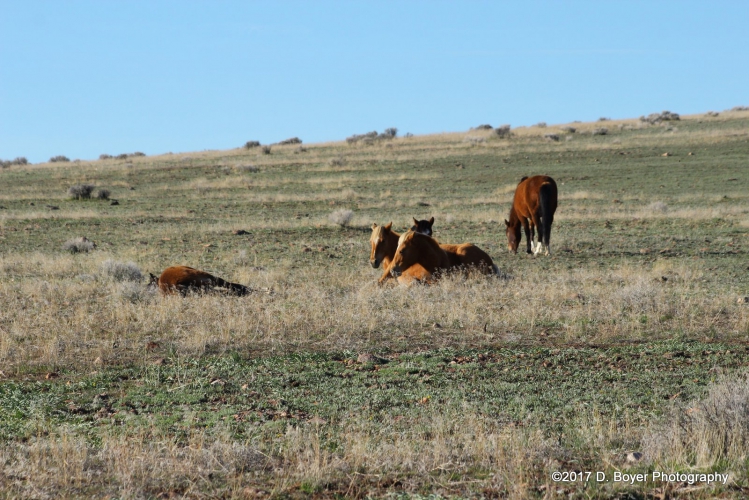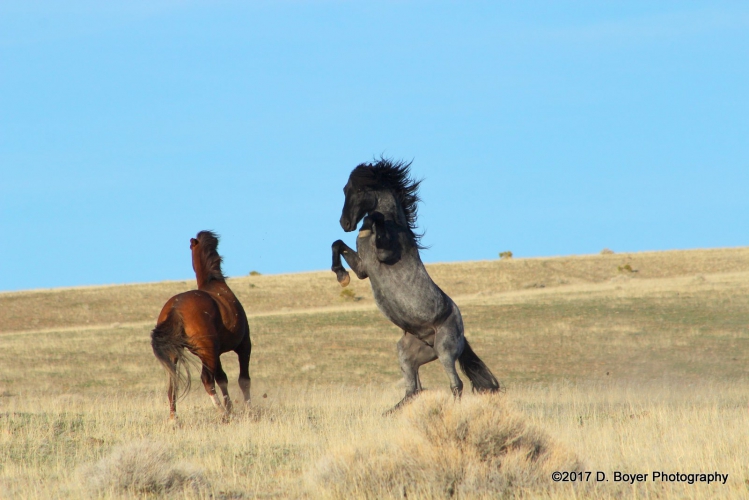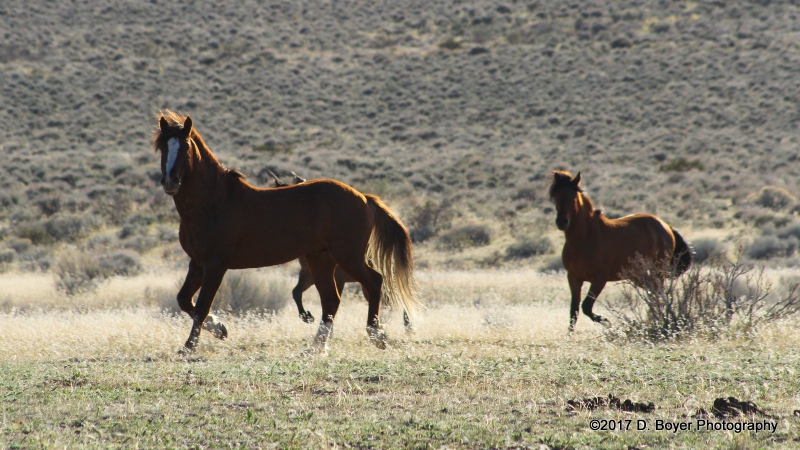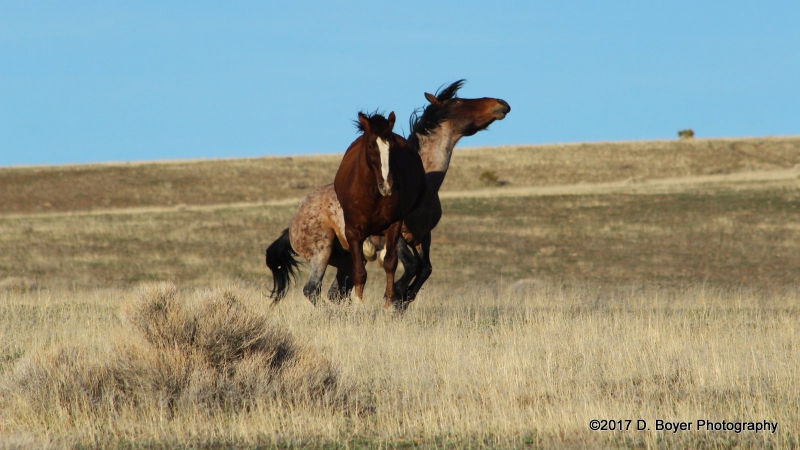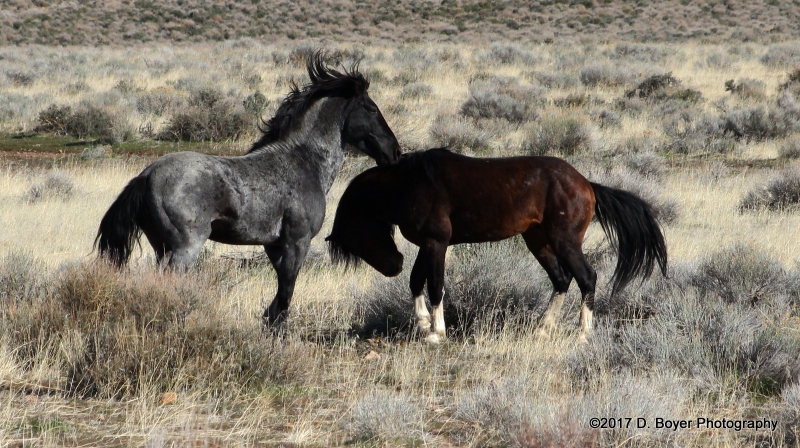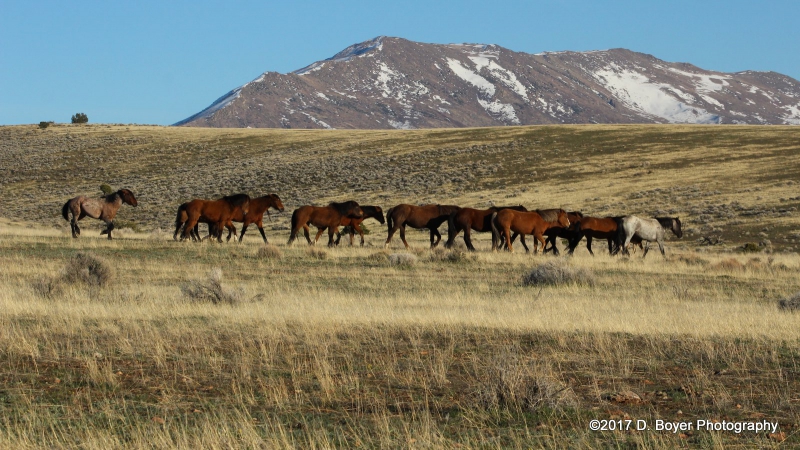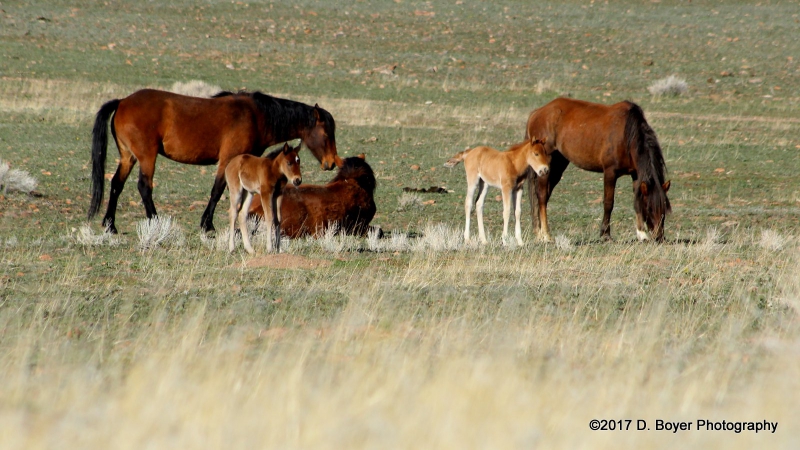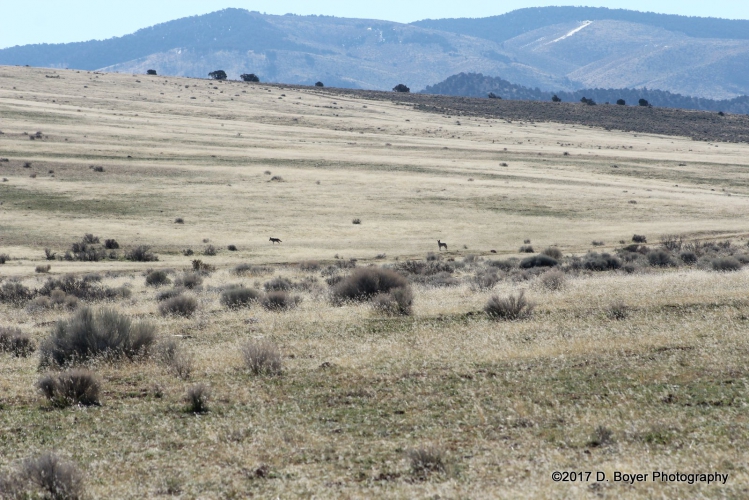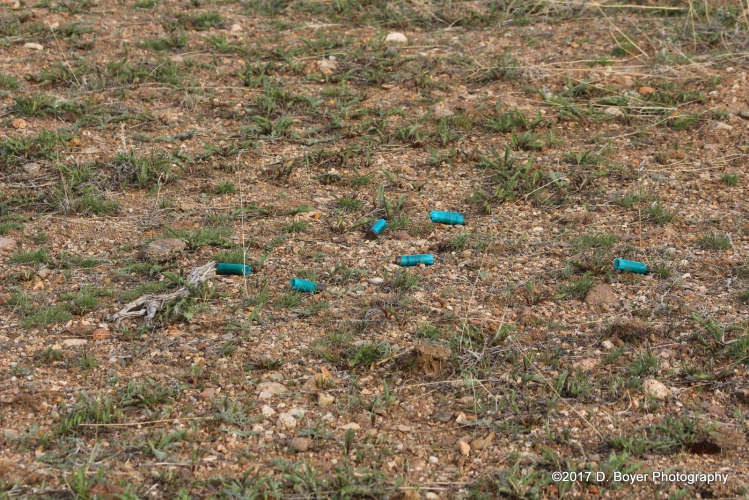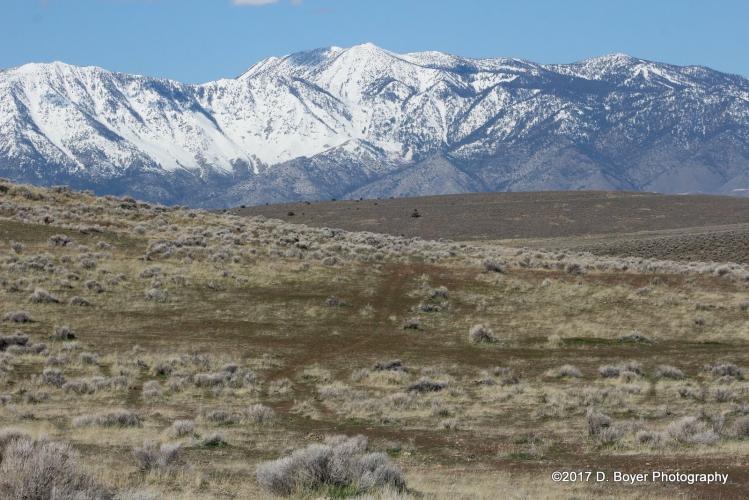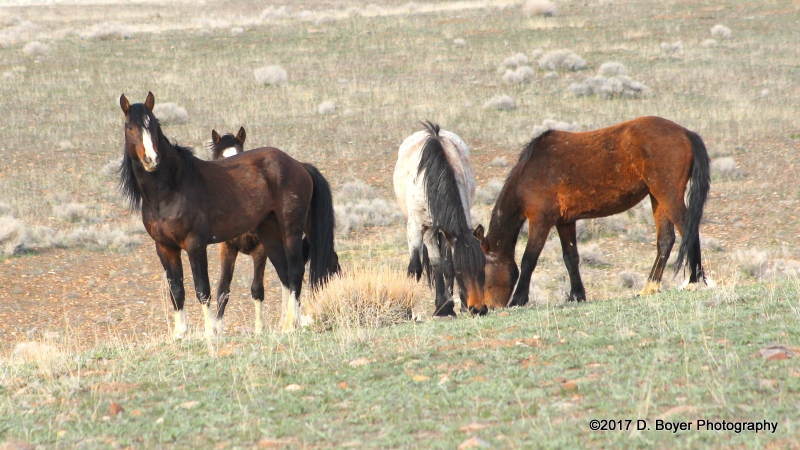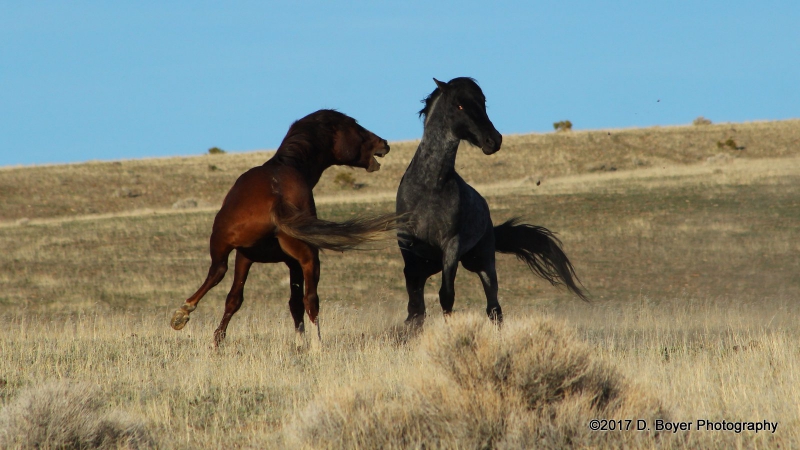From the Open-Publishing Calendar
From the Open-Publishing Newswire
Indybay Feature
The Wests’ most famed wild horse herd is facing a round-up
One of the American Wests’ most famed wild horse herd may be rounded up and sold at an auction.
Pics and video of my observation of wild horses in Nevada.
Pics and video of my observation of wild horses in Nevada.
In an area in the Pine Nut Mountains east of Gardnerville, Nevada there is wild horse herd known as the Fish Spring’s herd. This herd has many bands in it. I have counted at least 5 different band or family units in the Fish Spring’s herd. Bands known as the Blue’s band, Blondies band, Zorro’s band, Socks band, and Rogue’s band. The bands are named after the lead stallion. There are so few wild horses on that range that wild horse advocates, photographers and locals name the horses. The Fish Spring’s herd also has a volunteer group who used to control their population through the use of PZP. But the Bureau of Land Management put a halt to their operation. That volunteer group is known as the Pine Nut Wild Horse Advocates and their website is at this link >>>>> http://www.wildhorseadvocates.org/.
Wild Horse Tourism
This past winter locals and fans of the horses had to attend meetings hosted by the Bureau of Land Management over the pending round-up of their famed horses. I had reached out to the locals through a blog to inform them that as a tourist I have spent thousands of dollars in their town just to see that wild horse herd. In other words instead of spending my money in their casino’s, I spent my money in or around Gardnerville Nevada just because of that wild horse herd.
Why the Fish Spring’s Herd?
The Fish Springs herd genetic make-up is from South American Criollos and Exmoor Pony. The Exmoor pony has been given endangered status in the British Isles.
Somehow last year I became aware of that herd, so I visited them. My first visit to see that herd was incredible. I’ll never forget my first visit. No one can see the Fish Spring’s herd unless you have a 4x4 or an ATV, or a helicopter or plane. The road into the range to see them is full of boulders or rocks the size of watermelons. It is never easy to go out and see that herd in action, but once you figure out how to deal with those off-road conditions you’ll be amazed at what you can observe. My first visit I photographed new life on the range and death on the range. I saw horses happy in their family units and I saw wild horses grieve over the loss of their bandmate.
History
Wild horses also known as Mustangs roam free on our ranges and in our wilderness areas in the United States. The Bureau of Land Management manages or maintains the herds. Wild horses can be found in Oregon, Arizona, New Mexico, Utah, California, Montana, Idaho, Florida, Colorado and Wyoming. There are also wild horses herds in North Carolina. When the BLM determines there are too many wild horses they initiate round-ups or gathers. The BLM states when the wild horse populations exceed appropriate management levels they start with the round-ups. In other words when there are too many horses on public land they take action. The Bureau of Land Management also initiates round-ups in the name of protecting the land and preserving a bird. Often the BLM will initiate round-ups to preserve sage grouse habitat. Sage Grouse are birds that live on and in our wilderness areas. In 2010 the U.S. Fish and Wildlife Service (USFWS) stated the decline in the Sage Grouse populations warrants them to be protected under the U.S. Federal Endangered Species Act (ESA). However it was later determined that many other species are endangered and they want them on the endangered list, but not the Sage Grouse. The Agricultural Research Service (ARS) of the United States Department of Agriculture (USDA) investigated the Sage Grouse habitat and concluded cattle were mostly responsible for the decline in Sage Grouse habitat. They never determined that wild horses were responsible for the destruction of the Sage Grouse habitat.
Laws that are supposed to Protect Wild Horses
In 1971 Richard M. Nixon signed into law the Wild and Free-Roaming Horses and Burros Act of (WFRHBA). That act is supposed to cover “the management, protection and study of "unbranded and unclaimed horses and burros on public lands in the United States." In 1950 Velma Bronn Johnston, also known as "Wild Horse Annie" became aware of the extremely cruel and harsh conditions wild horses were facing so she helped pass the Hunting Wild Horses and Burros on Public Lands Act in 1959, but that law did not properly address the needs of the horses on public lands. As a result of the Public Rangelands Improvement Act (PRIA),[42] the BLM established 209 herd management areas (HMAs) where feral horses were permitted to live on federal land. However in 2004 a man by the name of Conrad Burn’s prepared what is known as the Burns Amendment, which “effectively allows the BLM, after rounding up free-roaming wild horses, to sell “without limitation” and placing them in jeopardy of commercial processing (slaughter) because once sold they are no longer under the protection of the Act.”
Round-ups
Wild horses love their families and their freedom, but after they are rounded-up they lose all of that. When the Bureau of Land Management decides the amount of horses exceed the appropriate management area (AML) they organize the rounding up of the excess horses. In all round-ups helicopters are used to corral the horses into holding pens. From those pens they are taken too adoption centers and either are put up for adoption or sold at auctions. Many times they are sold at auctions to kill-buyers. Several kill-buyers have in the past been charged with abusing the horses they bought. Wild horses are often die in those round-ups or are severely injured. Often wild horses are adopted by people who are willing to care for them and or train them to perform real life duties. When helicopters are used to round them up animal rights activists have witnessed:
• Helicopters pursuing horses too closely and for too long;
• Excessive and inappropriate use of electric prod, based on animal welfare experts’ review of the videos;
• Kicking, pinning horses in gates and twisting of tails during loading.
Wild horses could be rounded-up into extinction.
Controlling Population
Sometimes the populations of wild horses can be controlled through the use of a pesticide known as PZP or porcine zona pellucida. “Two versions of the vaccine are currently in use – one version, known as Zonastat-H, is implemented through ground-darting programs and is only effective for approximately one year. The second version, known as PZP-22, is effective for 1-2 years but must be hand-injected into a captured wild horse.” Volunteer groups often are the ones’ who use the PZP type that is used to dart mares. Mares are female horses. However lately the BLM has denied permission to those volunteer groups, so the populations are growing.
What can you do?
Firstly I wish folks would re-think the wild horses. At this point in time they are no longer feral or estrays they are Mustang’s, and they all have backgrounds and genetic make-ups or bloodlines that are so precious and rare they deserve protection. If their bloodlines are wiped out then horses will never have diverse origination. In the end we may find their bloodlines or genetic make-up preserved in zoos.
Contact the Bureau of Land Management.
Explain to them rounding up our famed herds is unacceptable and cruel. Please especially mention the Fish Springs herd in western Nevada.
Wild Horse and Burro Information Call Center; 866-4MUSTANGS(866-468-7826)
E-mail: wildhorse [at] blm.gov
CALIFORNIA
California State Office
2800 Cottage Way, Suite 1623
Sacramento, California 95825
(916) 978-4400
Litchfield Off-Range Corrals
474-000 Highway 395 East
Litchfield, CA 96117
(800) 545-4256
Ridgecrest Off-Range Corrals
3647-A Randsburg Wash Road
Ridgecrest, CA 93562
(800) 951-8720
NEVADA
Nevada State Office
1340 Financial Blvd.
Reno, NV 89502
(775) 861-6500
National WH&B Adoption Center at Palomino Valley
P.O. Box 3270
Sparks, NV 89432
(775) 475-2222
And please visit this website >>> https://americanwildhorsecampaign.org/action
Wild Horse Tourism
This past winter locals and fans of the horses had to attend meetings hosted by the Bureau of Land Management over the pending round-up of their famed horses. I had reached out to the locals through a blog to inform them that as a tourist I have spent thousands of dollars in their town just to see that wild horse herd. In other words instead of spending my money in their casino’s, I spent my money in or around Gardnerville Nevada just because of that wild horse herd.
Why the Fish Spring’s Herd?
The Fish Springs herd genetic make-up is from South American Criollos and Exmoor Pony. The Exmoor pony has been given endangered status in the British Isles.
Somehow last year I became aware of that herd, so I visited them. My first visit to see that herd was incredible. I’ll never forget my first visit. No one can see the Fish Spring’s herd unless you have a 4x4 or an ATV, or a helicopter or plane. The road into the range to see them is full of boulders or rocks the size of watermelons. It is never easy to go out and see that herd in action, but once you figure out how to deal with those off-road conditions you’ll be amazed at what you can observe. My first visit I photographed new life on the range and death on the range. I saw horses happy in their family units and I saw wild horses grieve over the loss of their bandmate.
History
Wild horses also known as Mustangs roam free on our ranges and in our wilderness areas in the United States. The Bureau of Land Management manages or maintains the herds. Wild horses can be found in Oregon, Arizona, New Mexico, Utah, California, Montana, Idaho, Florida, Colorado and Wyoming. There are also wild horses herds in North Carolina. When the BLM determines there are too many wild horses they initiate round-ups or gathers. The BLM states when the wild horse populations exceed appropriate management levels they start with the round-ups. In other words when there are too many horses on public land they take action. The Bureau of Land Management also initiates round-ups in the name of protecting the land and preserving a bird. Often the BLM will initiate round-ups to preserve sage grouse habitat. Sage Grouse are birds that live on and in our wilderness areas. In 2010 the U.S. Fish and Wildlife Service (USFWS) stated the decline in the Sage Grouse populations warrants them to be protected under the U.S. Federal Endangered Species Act (ESA). However it was later determined that many other species are endangered and they want them on the endangered list, but not the Sage Grouse. The Agricultural Research Service (ARS) of the United States Department of Agriculture (USDA) investigated the Sage Grouse habitat and concluded cattle were mostly responsible for the decline in Sage Grouse habitat. They never determined that wild horses were responsible for the destruction of the Sage Grouse habitat.
Laws that are supposed to Protect Wild Horses
In 1971 Richard M. Nixon signed into law the Wild and Free-Roaming Horses and Burros Act of (WFRHBA). That act is supposed to cover “the management, protection and study of "unbranded and unclaimed horses and burros on public lands in the United States." In 1950 Velma Bronn Johnston, also known as "Wild Horse Annie" became aware of the extremely cruel and harsh conditions wild horses were facing so she helped pass the Hunting Wild Horses and Burros on Public Lands Act in 1959, but that law did not properly address the needs of the horses on public lands. As a result of the Public Rangelands Improvement Act (PRIA),[42] the BLM established 209 herd management areas (HMAs) where feral horses were permitted to live on federal land. However in 2004 a man by the name of Conrad Burn’s prepared what is known as the Burns Amendment, which “effectively allows the BLM, after rounding up free-roaming wild horses, to sell “without limitation” and placing them in jeopardy of commercial processing (slaughter) because once sold they are no longer under the protection of the Act.”
Round-ups
Wild horses love their families and their freedom, but after they are rounded-up they lose all of that. When the Bureau of Land Management decides the amount of horses exceed the appropriate management area (AML) they organize the rounding up of the excess horses. In all round-ups helicopters are used to corral the horses into holding pens. From those pens they are taken too adoption centers and either are put up for adoption or sold at auctions. Many times they are sold at auctions to kill-buyers. Several kill-buyers have in the past been charged with abusing the horses they bought. Wild horses are often die in those round-ups or are severely injured. Often wild horses are adopted by people who are willing to care for them and or train them to perform real life duties. When helicopters are used to round them up animal rights activists have witnessed:
• Helicopters pursuing horses too closely and for too long;
• Excessive and inappropriate use of electric prod, based on animal welfare experts’ review of the videos;
• Kicking, pinning horses in gates and twisting of tails during loading.
Wild horses could be rounded-up into extinction.
Controlling Population
Sometimes the populations of wild horses can be controlled through the use of a pesticide known as PZP or porcine zona pellucida. “Two versions of the vaccine are currently in use – one version, known as Zonastat-H, is implemented through ground-darting programs and is only effective for approximately one year. The second version, known as PZP-22, is effective for 1-2 years but must be hand-injected into a captured wild horse.” Volunteer groups often are the ones’ who use the PZP type that is used to dart mares. Mares are female horses. However lately the BLM has denied permission to those volunteer groups, so the populations are growing.
What can you do?
Firstly I wish folks would re-think the wild horses. At this point in time they are no longer feral or estrays they are Mustang’s, and they all have backgrounds and genetic make-ups or bloodlines that are so precious and rare they deserve protection. If their bloodlines are wiped out then horses will never have diverse origination. In the end we may find their bloodlines or genetic make-up preserved in zoos.
Contact the Bureau of Land Management.
Explain to them rounding up our famed herds is unacceptable and cruel. Please especially mention the Fish Springs herd in western Nevada.
Wild Horse and Burro Information Call Center; 866-4MUSTANGS(866-468-7826)
E-mail: wildhorse [at] blm.gov
CALIFORNIA
California State Office
2800 Cottage Way, Suite 1623
Sacramento, California 95825
(916) 978-4400
Litchfield Off-Range Corrals
474-000 Highway 395 East
Litchfield, CA 96117
(800) 545-4256
Ridgecrest Off-Range Corrals
3647-A Randsburg Wash Road
Ridgecrest, CA 93562
(800) 951-8720
NEVADA
Nevada State Office
1340 Financial Blvd.
Reno, NV 89502
(775) 861-6500
National WH&B Adoption Center at Palomino Valley
P.O. Box 3270
Sparks, NV 89432
(775) 475-2222
And please visit this website >>> https://americanwildhorsecampaign.org/action
Add Your Comments
Latest Comments
Listed below are the latest comments about this post.
These comments are submitted anonymously by website visitors.
TITLE
AUTHOR
DATE
wild horses
Thu, Dec 28, 2017 9:54AM
We are 100% volunteer and depend on your participation to sustain our efforts!
Get Involved
If you'd like to help with maintaining or developing the website, contact us.
Publish
Publish your stories and upcoming events on Indybay.
Topics
More
Search Indybay's Archives
Advanced Search
►
▼
IMC Network


